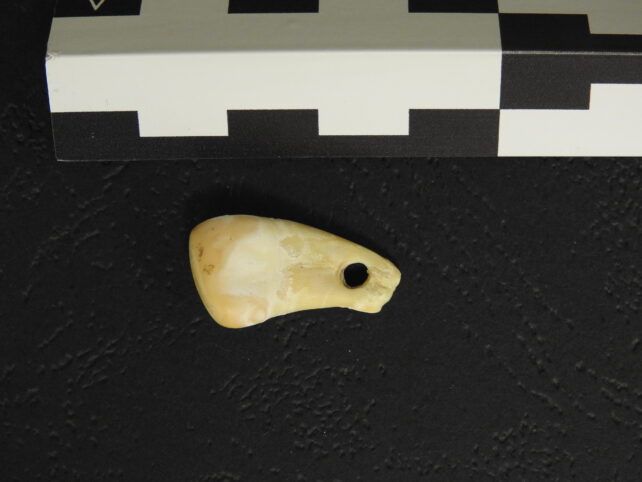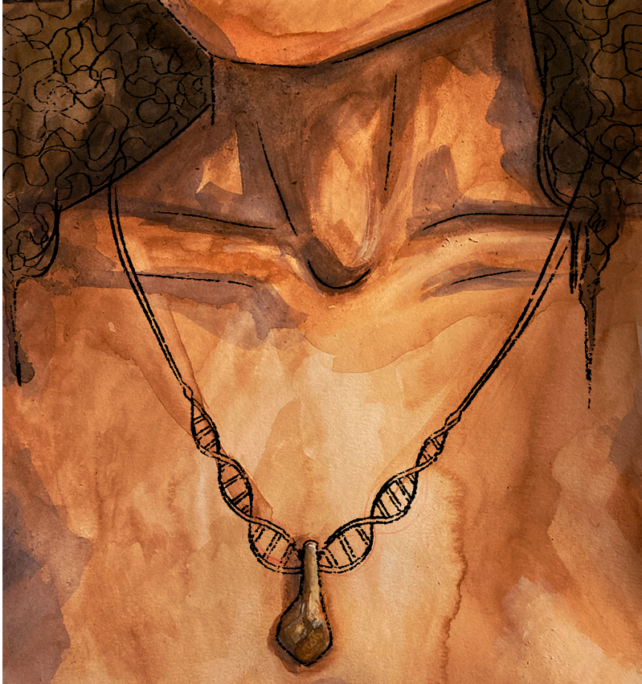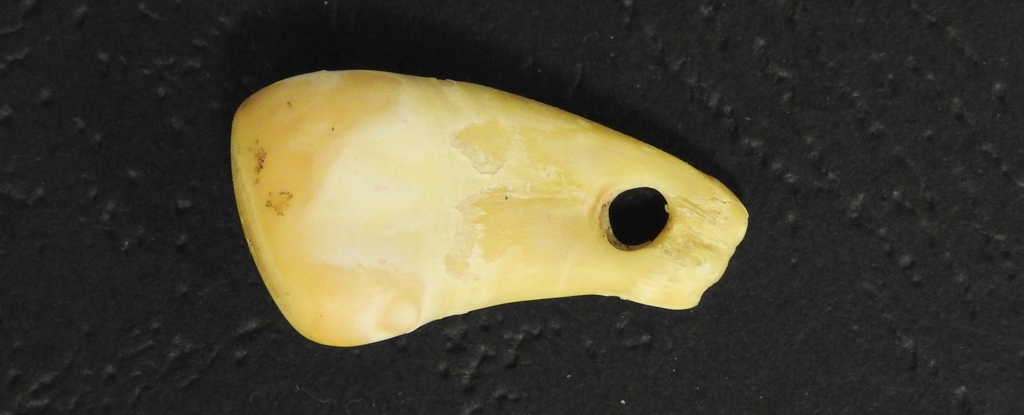Products You May Like
A pendant made from a deer’s tooth has turned out to be a veritable locket of genetic information left by an ancient woman who lived in Siberia some 20,000 years ago.
Evolutionary anthropologists at the Max Planck Institute in Germany found a way to safely probe ancient artifacts for environmental DNA without destroying them, and applied it to a piece of jewelery found in the famous Denisova Cave in Russia in 2019.
Other than the fragments of her chromosomes, no trace of the woman herself has been uncovered, though the genes absorbed by the pendant with her sweat and skin cells lead experts to think she belonged to an ancient group of North Eurasian individuals from the paleolithic times.
The incredible discovery opens up the idea that other prehistoric artifacts made from tooth and bone are untapped sources of ancient genetic material. They could very well hide information on how our ancestors once used, carried, or wore objects in the deep, deep past.
“Our work redefines how cultural and genetic records can be linked in prehistoric archaeology,” write the authors of the analysis.

Virtually every living thing leaves faint dustings of DNA in its surrounds as it sheds cells and breaks down. In recent years, scientists have become astonishingly good at finding these remnants of environmental DNA – or eDNA – in the air and soil.
With just a trace of genetic material, experts can now detect the presence of endangered populations that would otherwise be all but impossible to track using traditional techniques.
They can even uncover signs of species that have long since moved on from a location, or perished altogether. In December of 2022, an international team of scientists successfully used eDNA analysis to decode the oldest genetic material ever, dating back 2 million years.
This latest innovation in eDNA extraction uses a special concoction of chemicals to penetrate a porous artifact, like those made from teeth or bone, flushing out DNA fragments concealed within.
“One could say we have created a washing machine for ancient artifacts within our clean laboratory,” explains evolutionary anthropologist Elena Essel from the Max Planck Institute.
“By washing the artifacts at temperatures of up to 90°C, we are able to extract DNA from the wash waters, while keeping the artifacts intact.”
After years of testing, this ‘washing machine’ technique was used on a deer tooth pendant found in a cave in what is now Russian Siberia.
“The amount of human DNA we recovered from the pendant was extraordinary” says Essel, “almost as if we had sampled a human tooth.”

The number of X chromosomes in the human DNA suggests she was a woman. Matched with records of contemporary people, the sequences were most similar to two populations living further east in Siberia roughly 17,000 and 24,000 years ago. Compared with modern day populations, the genetic material aligned most with Native Americans.
In theory, if this woman was the one who wore the pendant as imagined, it would have likely absorbed the cells of her skin, sweat, blood, or saliva over time – becoming a locket of her DNA without her even knowing.
“Forensic scientists will not be surprised that human DNA can be isolated from an object that has been handled a lot,” says biochemist Matthias Meyer, “but it is amazing that this is still possible after 20,000 years.”
The team from Max Planck now plans to use their non-invasive technique on more prehistoric objects that are made from bone or teeth.
With the key of eDNA analysis, the hope is to reveal other overlooked pictures of the past.
The study was published in Nature.
